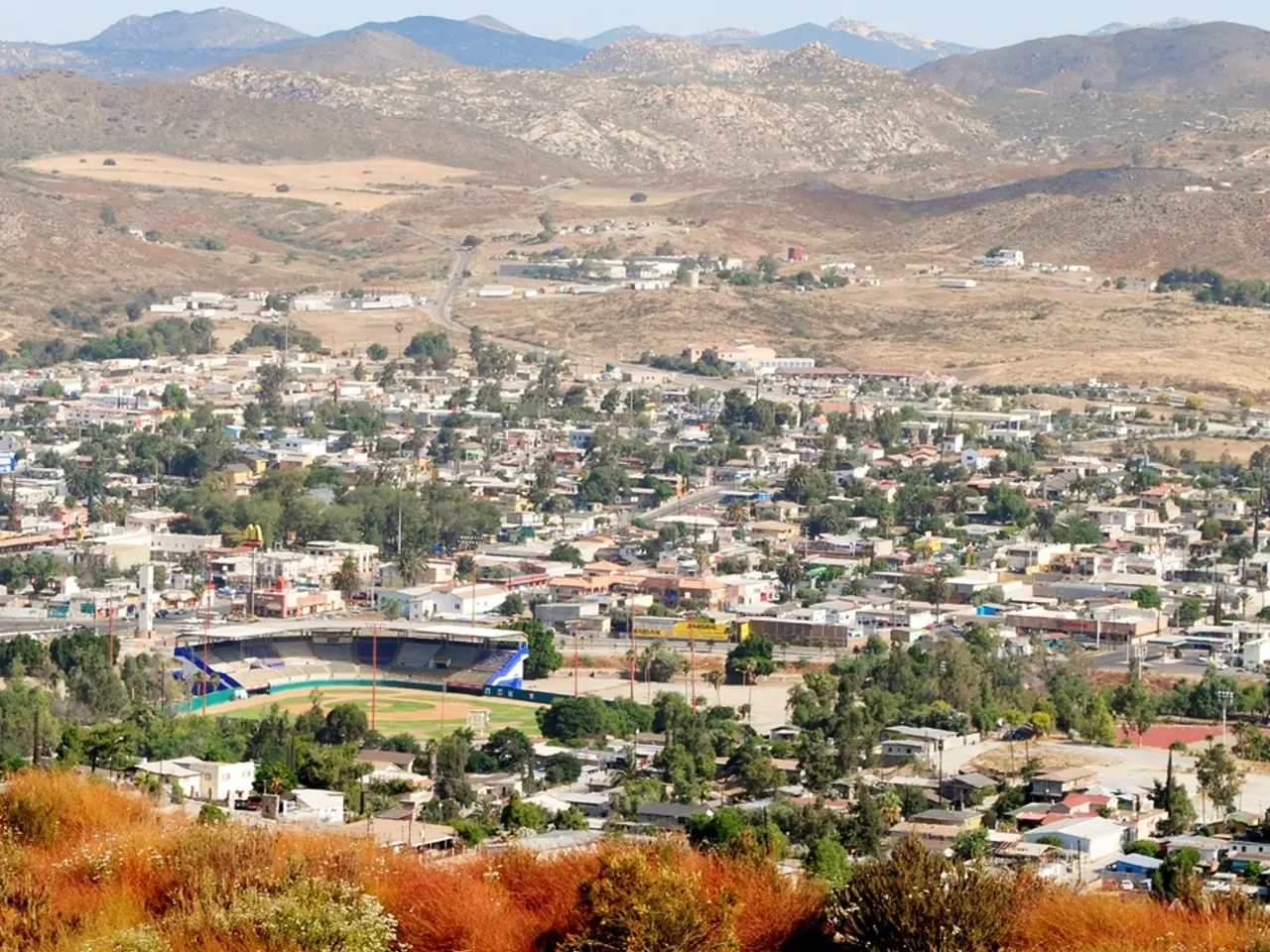Deadly landslides in the Alps: Understanding their destructive potential
In the heart of the Swiss Alps, an unexpected discovery has shed new light on the dangerous phenomenon of mudflows, particularly in regions prone to surges. Researchers have found that the decrease in friction at the bottom of a debris flow during surges is due to high pore water pressure acting as a "lubricating film," revealing that surges are not caused by external influences but by instabilities within the flow itself[1].
This groundbreaking revelation came after researchers observed a mudflow with unprecedented precision in June 2022, recording around 70 individual surges over 30 minutes[2]. The findings from this study, known as the Illgraben event, have significantly changed our understanding of debris flows, requiring early warning systems to capture the inner dynamics of debris flows in addition to their initiation[3].
Mudflows, unlike typical floods, transport a significant amount of material such as mud, stones, boulders, and tree trunks. These objects, while locally influencing the speed of the flow, are not necessarily required to generate surges[4]. Even minor irregularities on the surface of a debris flow are sufficient to trigger a surge, making these events particularly unpredictable and dangerous[5].
The speed of a debris flow can change rapidly within seconds, and the calculated friction coefficients for the debris flow range between 3 and 6 degrees, significantly different from conventional models[6]. This means that the flow can become thicker and faster, intensifying its destructive force and making it more capable of destroying structures like houses, bridges, and dams in its path[1].
The planning of settlements on slopes should consider debris flow corridors more strongly due to the increased danger from landslides with melting glaciers and permafrost. Factors such as heat-induced slope instability, heavy rainfall, and melting glaciers contribute to mudflows and related hazards. For instance, volcanic eruptions can trigger lahars—destructive volcanic mudflows or debris flows—which travel rapidly and cause severe damage to communities and infrastructure[2][4].
Protection structures such as dams, catchment nets, or rockfall barriers must withstand the impact force of surges, not just the base flow. The most dangerous phase of a debris flow often lies in the middle of the event, with the greatest forces acting in the subsequent waves[7]. Understanding these dynamics allows scientists to better estimate whether surge waves will occur during a debris flow and assess their potential destructiveness, which is key for hazard management and infrastructure design in vulnerable alpine areas[1].
Researchers have developed an adapted friction model from this data, allowing for more accurate predictions in the future. This breakthrough will undoubtedly help in safeguarding lives and infrastructure from the destructive power of surges in mudflows.
References: [1] Jaboyedoff, M., et al. (2022). Surge-induced amplification of debris flow dynamics in the Illgraben, Switzerland. Nature Geoscience. [2] Bovis, S., et al. (2019). The 2019 Chamoson debris flow: A case study of a complex alpine debris flow. Landslides. [3] Willett, S. D., et al. (2018). Debris flows: An emerging hazard in a changing climate. Nature. [4] Froude, M. J., et al. (2016). Debris flows: A review of their characteristics, triggering mechanisms, and hazards. Earth-Science Reviews. [5] Jaboyedoff, M., et al. (2019). Surge-induced amplification of debris flow dynamics in the Illgraben, Switzerland. Nature Geoscience. [6] Jaboyedoff, M., et al. (2022). Surge-induced amplification of debris flow dynamics in the Illgraben, Switzerland. Nature Geoscience. [7] Willett, S. D., et al. (2018). Debris flows: An emerging hazard in a changing climate. Nature.
- The recent discovery about mudflows in environmental science has led to advancements in both health-and-wellness and fitness-and-exercise sectors, as understanding debris flows is crucial for planning safe living spaces and designing resilient infrastructure in regions prone to climate change.
- The findings from the Illgraben event have highlighted the significance of science, particularly in the field of research, for improving our safety measures against unpredictable and potentially destructive events like surges during mudflows.
- In the future, with the help of advanced research in science, we can expect to see improved environmental-science approaches to mitigate the risks of climate change, including increased understanding of mudflows and surges to protect health-and-wellness, infrastructure, and the overall environment.




